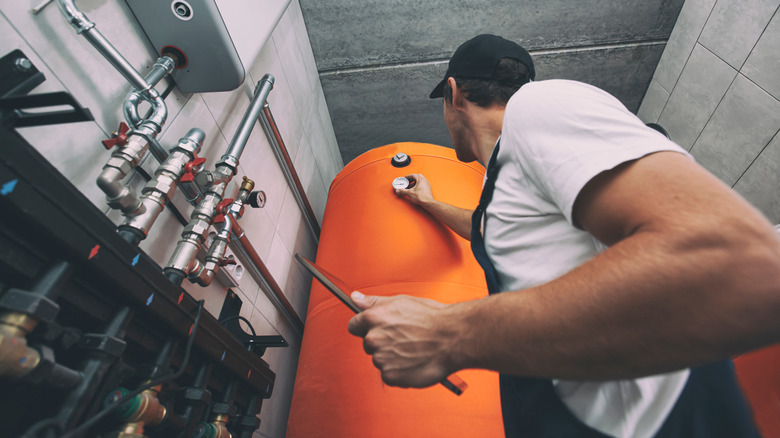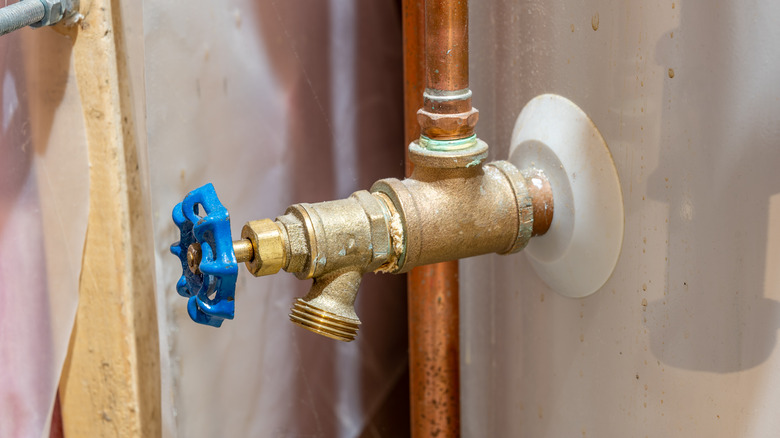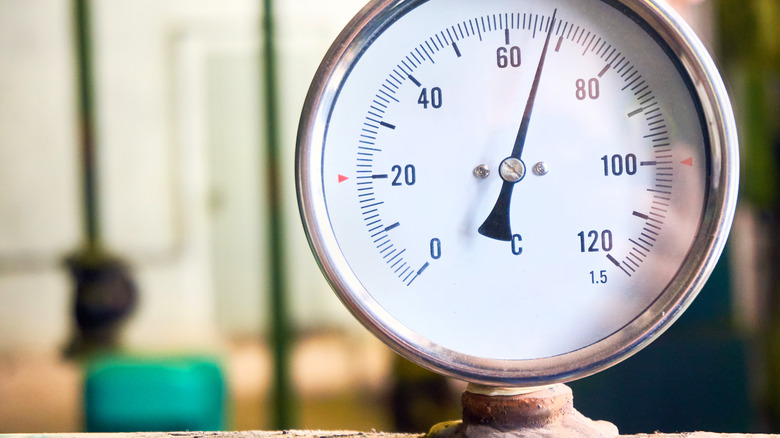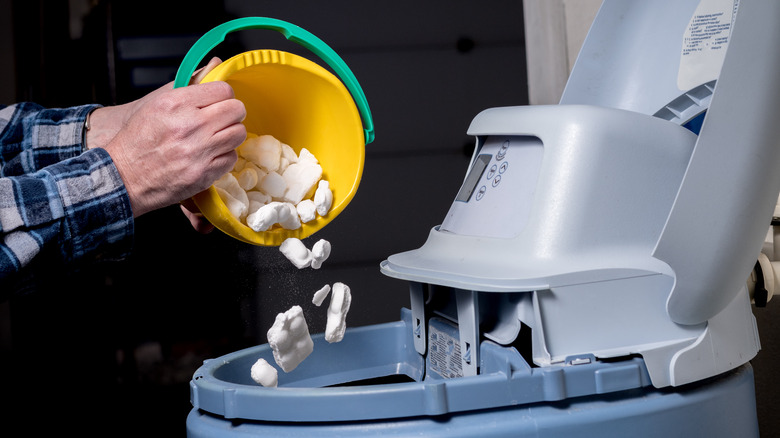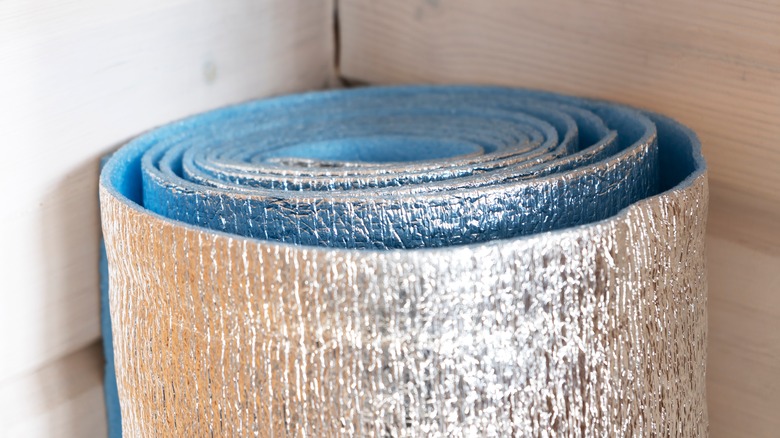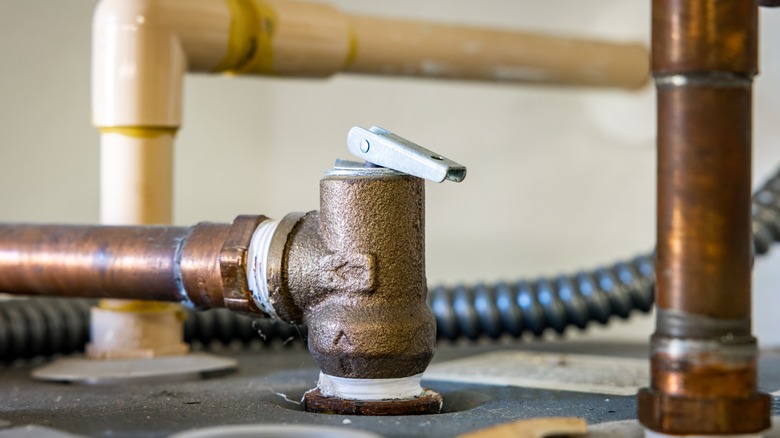5 Tips For Doubling The Life Of Your Water Heater, According To An Expert
Most water heaters run for up to 14 hours every day, and over time, they can develop problems like low water pressure, cracked pipes, and a defective thermostat. All in all, Sweet Home Advisor explains that water heaters typically only last between eight to 12 years. The lifespan of your water heater heavily depends on how often you use it and how well you care for it. Water heaters are an easy appliance to take for granted, but when they break, it makes the whole house unhappy.
Keeping up with regular maintenance is one way to ensure your water heater functions properly for years to come, but what parts should you be checking every few months? How often should you drain your entire heater? In an exclusive interview with House Digest, Jake Romano, manager at John the Plumber, gives us some tips on how to extend the life of your water heater — and even double it.
Drain your heater once or twice a year
Draining your water heater is a crucial part of routine maintenance that you should be performing every six to twelve months. Depending on the water quality where you live, it may be better to drain more often. Jake Romano explains, "There are all kinds of minerals in our water supply. These minerals often settle in our water heaters. Draining the sediment out of your water heater is good for efficiency and can help extend the lifespan of your water heater."
Not sure how to drain your heater? Romano lays out these steps to make the process easy: "1) Turn off your water heater; 2) Connect a hose to the drain at the bottom of the water heater. Place the other end of the hose so it drains into the floor drain; 3) Open the drain valve." At a rate between nine and 17 gallons per minute, an average 50-gallon water heater will take about three to five minutes to drain completely (via USA Water Quality). Don't panic if the drainage looks a little murky. Romano says, "If you see colored water, that's all mineral and sediment from your water supply." Better out than in!
Set the appropriate temperature
"Most people set their water heater between 120 and 140 degrees Fahrenheit (48 to 60 degrees Celsius)," Jake Romano says, "If you set it lower, you're at risk of bacteria growth." One of the most common bacteria to thrive in water heaters is Legionella. If Legionella spread to the lungs through air droplets or drinking water, they can cause Legionnaire's disease and Pontiac fever, characterized by fever, cough, chills, and muscle aches (via Centers for Disease Control and Prevention). Setting your temperature above 120 degrees makes your water heater too hot for most dangerous bacteria.
However, Romano also warns that you'll need to be careful not to swing too far in the other direction: "If you set it too high, you're at risk of scalding water, and you're going to age your machine faster." Balancing your temperature gauge right between 120 and 140 degrees Fahrenheit should give you the best protection against bacteria and benefit your household in other ways. Romano says, "Water heaters account for an enormous part of our energy usage, and lowering the heat will save money on your utilities."
Get a water softener
"Hard" water may seem like a contradiction, but the word "hard" is used to describe water with very high mineral content. The most common minerals found in hard water are limestone, chalk, and other calcium and magnesium-based minerals. Frequently draining your hot water heater will help with managing minerals, but a water softener can work wonders for homeowners with serious hard water. A water softener is a highly efficient filtration device that removes calcium and magnesium by exchanging ions with sodium from rock salt.
Most people don't need to worry about hard water, but if you live in an area with high mineral content, Jake Romano strongly recommends purchasing a water softener. He says, "Not only is hard water bad for your skin, hair, and more, but it ruins your plumbing — including your water heater. Hard water will build up a ton of minerals in your water heater that will drastically lower the efficiency and increase the wear and tear."
Insulate your water heater
Another simple yet effective line of defense in preserving your water heater is an insulation blanket. An average water heater blanket should only cost you about $30 to $50, and it'll last for years. "Water heater insulating blankets are not very expensive," Jake Romano emphasizes, "but if they can help your water heater not work as hard to maintain a consistent water temperature, there's no doubt it will extend your water heater lifespan."
Older heaters tend to leak more heat than modern ones. One way to tell if an insulation blanket would help is to touch the outside of your hot water heater. If it feels warm on the outside, chances are a blanket would help to retain some of that heat. Energy.gov provides some helpful steps for wrapping your water heater; always start by turning off electric heaters, then measure, cut, and wrap the blanket. Use tape to temporarily hold the blanket in place while you mark holes for the controls and valves. Make sure they line up, then secure the blanket tightly with tape. You want your blanket to have a snug, high-coverage fit to get the best insulating results.
Ensure the pressure relief valve is working
Jake Romano explains that "water heaters are essentially sealed containers that deal with heat, water, and steam. They need pressure relief valves to manage high pressure. If your water heater can't manage its own pressure, then you're at risk of serious issues. A water heater without a working pressure valve can literally explode." Some signs of high pressure to watch out for include a leaking pressure valve, popping and cracking noises, or water discoloration (via Three Two Home). Any of these could indicate that your water heater has reached its pressure limits.
Like a tea kettle, a hot water heater needs a valve for steam and pressure to escape. If the valve doesn't function properly, you're at high risk for a break, leak, or even explosion. To avoid this, Romano says, "test your pressure valve once or twice a year. Place a bucket under the pressure valve, open it, and close it. Water should begin pouring out and stop pouring out. If it doesn't work as described, you need to replace the pressure valve right away." Replacing the pressure valve is something you can do on your own quite easily, but if you want to be extra careful, it's never a bad idea to call your plumber or hot water heater company.
